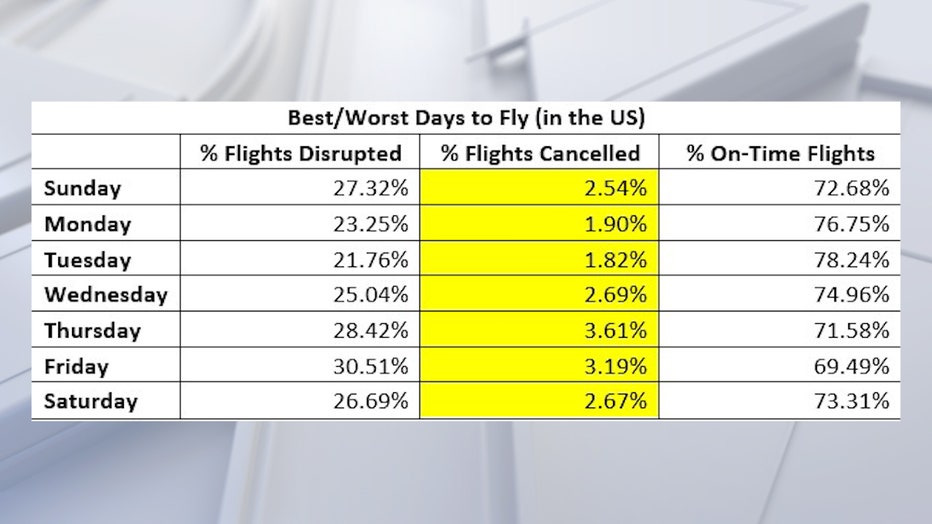New data reveals the worst times to fly, worst airports for cancellations
Flight attendant entertains cabin with theatrical safety demonstration
A Southwest Airlines flight attendant garnered a chorus of laughter while giving a campy safety demonstration on a July 5 flight from Nashville, Tennessee, to Atlanta, Georgia. (Credit: Brittney Abernathy via Storyful)
AirHelp, a German-based claims management company, is out with its list of the worst times to fly and the worst airports for cancellations.
With the worst times to fly, the company looked at the percentages of flights canceled on any given day of the week.
Their results showed that Thursdays and Fridays usually have the highest percentage of airline cancellations in the U.S. at 3.6% and 3.2% respectively.
RELATED: European airport will pay passengers who missed flights amid summer chaos

AirHelp chart showing which days are generally the worst to fly.
On the other end of the spectrum, Tuesdays are the best days to fly with only 1.8% of flights usually canceled.
With regards to the U.S. airports with the most cancellations, AirHelp compiled this list based on the number of flights canceled:
- LGA – LaGuardia Airport (7.7%)
- EWR - Newark Liberty International Airport (7.6%)
- DCA - Ronald Reagan Washington National Airport (5.9%)
- PIT – Pittsburgh International Airport (4.1%)
- BOS – Boston Logan International Airport (4%)
- CLT – Charlotte Douglas International Airport (3.8%)
- PHL – Philadelphia International Airport (3.8%)
- CLE – Cleveland Hopkins International Airport (3.7%)
- MIA – Miami International Airport (3.7%)
- JFK – John F. Kennedy International Airport (3.6%)
The company said, for reference, about 2.6% of all flights across the U.S. were canceled between May 27, 2022 – July 31, 2022.
Travelers have been hit with widespread cancellations and delays this summer. Travel bounced back faster than expected — to about 88% of pre-pandemic levels in July — and airlines weren’t able to increase staffing fast enough. They have been cutting back on schedules in an attempt to make remaining flights more reliable.
RELATED: Airlines would have to give refunds for delayed flights under new rule proposal
Airlines flying in the U.S. had a bad June, canceling more than 21,000 flights or 2.7% of flights, up from 1.8% in June 2019, before airlines pushed workers to quit during the pandemic. The airlines did better in July, however, canceling about 14,000 flights, or 1.8%.
Company executives blamed the surge of canceled flights on the Federal Aviation Administration, which runs the nation’s air traffic control system, but Transportation Secretary Pete Buttigieg disputed that claim.
Airlines could almost surely be carrying more passengers if they had enough staffing. Many U.S. airlines have trimmed their summer schedules after bad weather, air-traffic delays and a lack of enough employees caused widespread cancellations back during the Memorial Day weekend.
Airlines paid thousands of workers to quit during the early days of the COVID-19 pandemic, when air travel plummeted and airline revenue dried up. They have been hiring recently, but it takes time to train pilots, who are in particularly short supply.
Now airlines competing for key employees are offering double-digit raises to pilots, who find themselves with leverage in negotiations over new contracts.
The Associated Press contributed to this story. This story was reported from Los Angeles.

